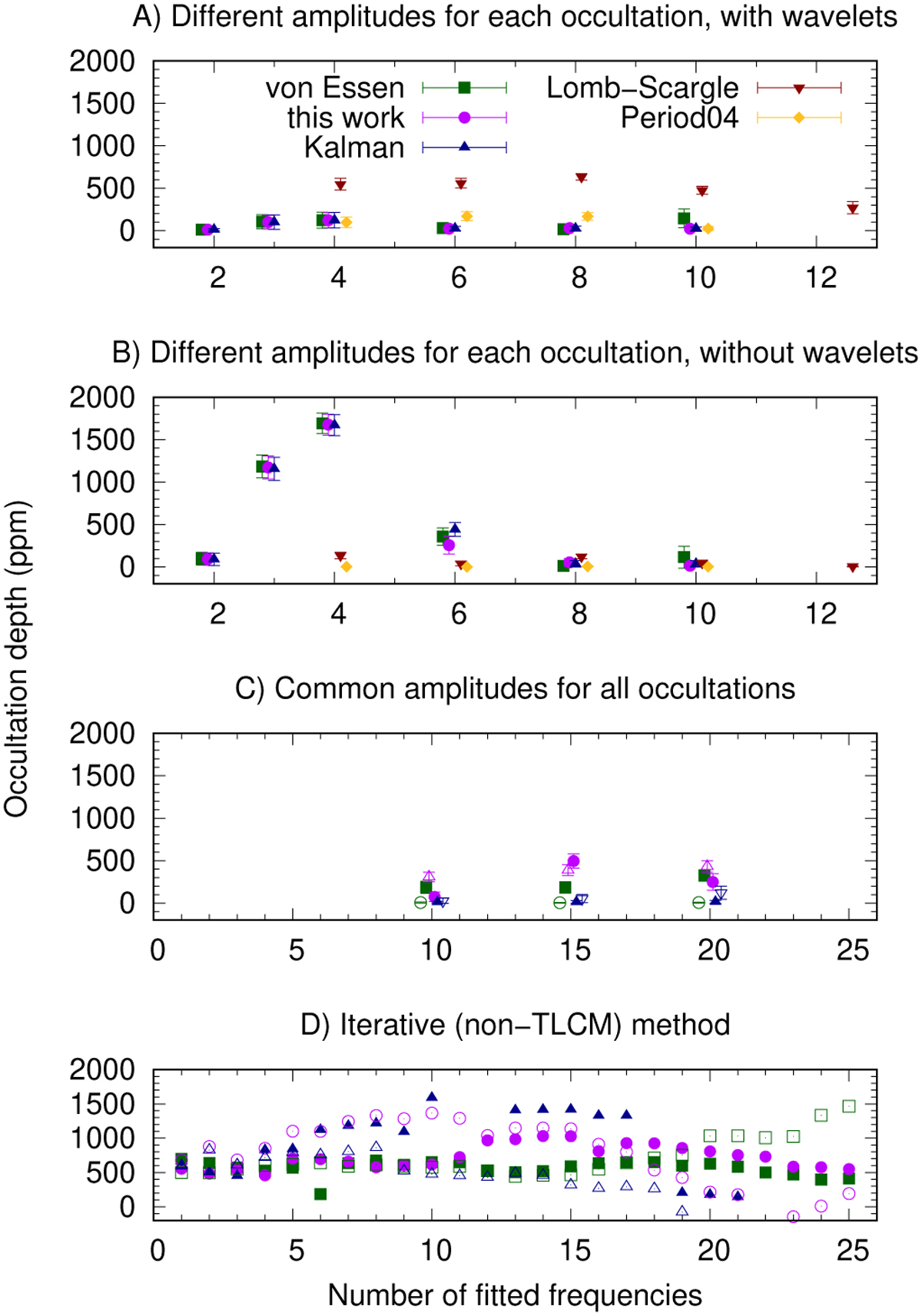Fig. 4

Download original image
Comparison of fitted occultation depths resulting from different approaches to fitting the pulsations. The different colours and symbols correspond to different input lists of pulsation frequencies (see key top right, that applies to all sub panels). (A) Different amplitudes were fitted (using TLCM) for each of the four occultations, and residual red noise was fitted with the wavelet method. (B) As (A), but without the wavelets. (C) A common set of amplitudes was fitted (using TLCM) to all the occultations, with wavelets (solid symbols) and without wavelets (open symbols). (D) Here, pulsation signals were fitted and subtracted iteratively, using a simple code, with solid symbols representing a common set of frequencies across all occultations, and open symbols representing unique frequencies for each occultation. In the upper three panels, points are slightly shifted horizontally for readability. The abscissa has different scales in panels A&B and C&D.
Current usage metrics show cumulative count of Article Views (full-text article views including HTML views, PDF and ePub downloads, according to the available data) and Abstracts Views on Vision4Press platform.
Data correspond to usage on the plateform after 2015. The current usage metrics is available 48-96 hours after online publication and is updated daily on week days.
Initial download of the metrics may take a while.


